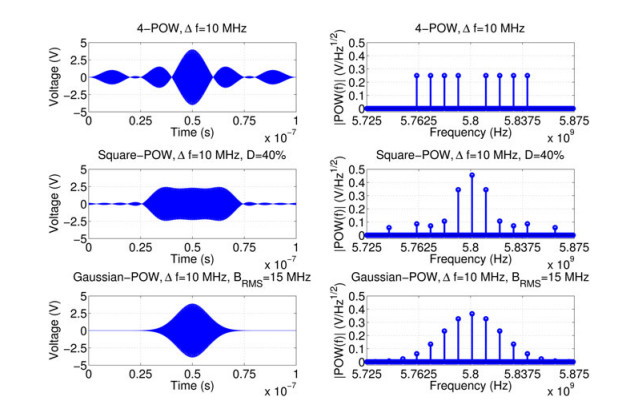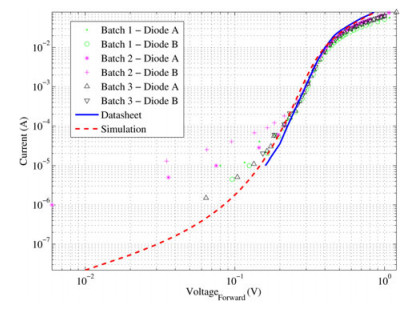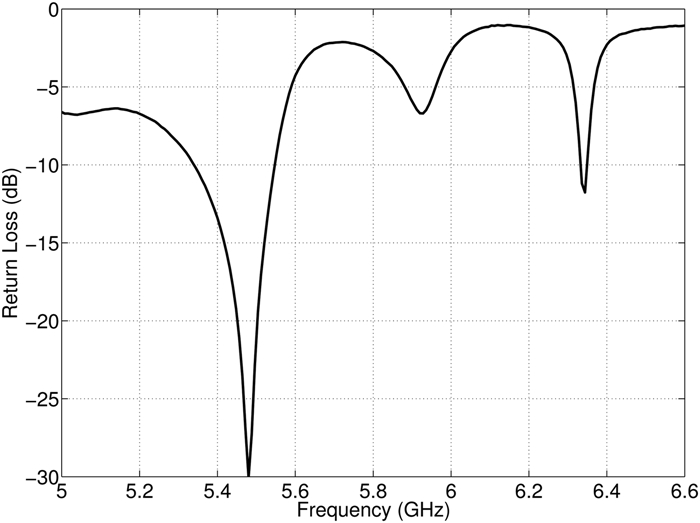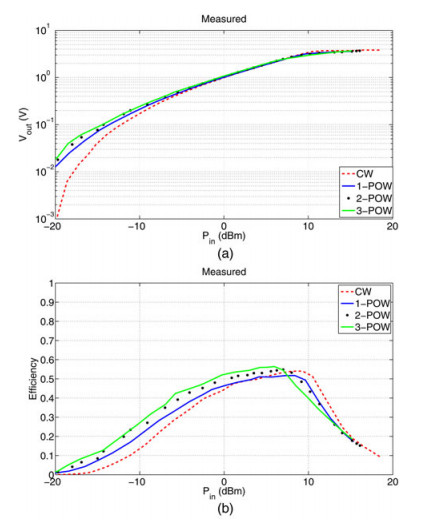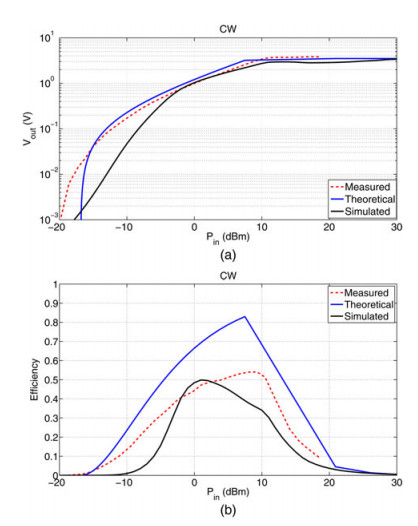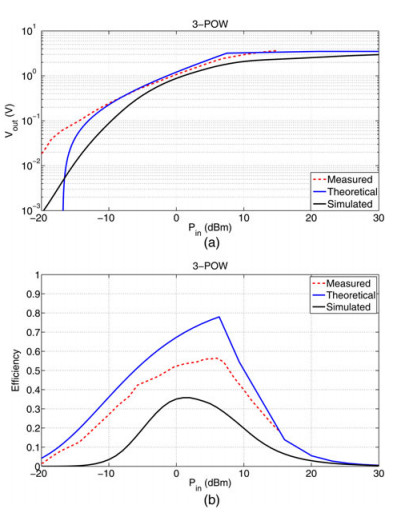Ultra-low-power energy harvesting using power-optimized waveforms
-
1.
Electro-optical Systems Laboratory, Georgia Tech Research Institute, Atlanta, Georgia 30332, USA
-
2.
Department of Electrical and Computer Engineering, Georgia Institute of Technology, Atlanta, Georgia 30332, USA
More Information
-
Author Bio:
 Christopher R. Valenta
Christopher R. Valenta received his BSECE and BSOE from the Rose-Hulman Institute of Technology and his MSECE and Ph.D. in ECE from Georgia Institute of Technology. In 2008, he joined “The Propagation Group” where he commercialized the first 5.8 GHz backscatter sensor system for use in high-voltage environments, developed numerous RFID-enabled sensors, and pioneered work in microwave-energy harvesting using power-optimized waveforms. In 2009, he was awarded an ATLANTIS Fellowship and participated in an 18-month research program with the Politecnico di Torino and the Technical University of Munich. Christopher has also spent time as a visiting scholar in the Sampei Laboratory at the University of Osaka. He is currently a research engineer and Shackleford Fellow at the Georgia Tech Research Institute Electro-optical Systems Laboratory where he researches microwave-energy harvesting; backscatter radio communication; RFID; ultra-low power, passive sensors; lidar systems; and software defined radio. He is on the steering committee for the IEEE Council on RFID, a frequent reviewer of journals and conference proceedings, and the winner of the 2015 IEEE Microwave Magazine Best Paper Award.
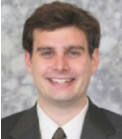 Gregory D. Durgin
Gregory D. Durgin joined the Faculty of Georgia Tech’s School of Electrical and Computer Engineering in Fall 2003. He received the BSEE (96), MSEE (98), and Ph.D. (00) degrees from Virginia Polytechnic Institute and State University. In 2001, he was awarded the Japanese Society for the Promotion of Science (JSPS) Postdoctoral Fellow and spent 1 year as a visiting researcher at Morinaga Laboratory in Osaka University. In 1998, he received the Stephen O. Rice prize (with coauthors Theodore S. Rappaport and Hao Xu) for best original journal article in the IEEE Transactions on Communications. Professor Durgin also authored Space-Time Wireless Channels, the first textbook in the field of space-time channel modeling. Professor Durgin serves on the IEEE Wave Propagation Standards Committee. He has won several teaching awards as well as the National Science Foundation CAREER research award. He serves regularly as a consultant to industry
-
Corresponding author:
C.R. Valenta Email: chris.valenta@gtri.gatech.edu
-
Abstract
Power-optimized waveforms (POWs) are the enabling technology for realizing an internet-of-things (IoTs). An IoT will require billions or trillions of sensors, which must rely on passive, backscatter communication to facilitate the wireless transfer of information. Passive, backscatter sensors are uniquely suited for an IoT because of their ease of installation, low-cost, and lack of potentially toxic batteries. POW’s primary benefit is that they can greatly improve the energy-harvesting efficiency of passive sensors, which increases their range and reliability. An overview of POWs is presented followed by measured results validated by a theoretical model and computer simulations. These measured results conducted at 5.8 GHz demonstrate the highest reported efficiency of a low-power, microwave energy-harvesting circuit of 26.3% at an input power of −10.2 dBm when using an excitation signal with a peak-to-average-power ratio of 12.
-
About this article
Cite this article
Valenta CR, Durgin GD. 2016. Ultra-low-power energy harvesting using power-optimized waveforms. Wireless Power Transfer 3(1): 1-8 doi: 10.1017/wpt.2015.13
|
Valenta CR, Durgin GD. 2016. Ultra-low-power energy harvesting using power-optimized waveforms. Wireless Power Transfer 3(1): 1-8 doi: 10.1017/wpt.2015.13
|









 Christopher R. Valenta received his BSECE and BSOE from the Rose-Hulman Institute of Technology and his MSECE and Ph.D. in ECE from Georgia Institute of Technology. In 2008, he joined “The Propagation Group” where he commercialized the first 5.8 GHz backscatter sensor system for use in high-voltage environments, developed numerous RFID-enabled sensors, and pioneered work in microwave-energy harvesting using power-optimized waveforms. In 2009, he was awarded an ATLANTIS Fellowship and participated in an 18-month research program with the Politecnico di Torino and the Technical University of Munich. Christopher has also spent time as a visiting scholar in the Sampei Laboratory at the University of Osaka. He is currently a research engineer and Shackleford Fellow at the Georgia Tech Research Institute Electro-optical Systems Laboratory where he researches microwave-energy harvesting; backscatter radio communication; RFID; ultra-low power, passive sensors; lidar systems; and software defined radio. He is on the steering committee for the IEEE Council on RFID, a frequent reviewer of journals and conference proceedings, and the winner of the 2015 IEEE Microwave Magazine Best Paper Award.
Christopher R. Valenta received his BSECE and BSOE from the Rose-Hulman Institute of Technology and his MSECE and Ph.D. in ECE from Georgia Institute of Technology. In 2008, he joined “The Propagation Group” where he commercialized the first 5.8 GHz backscatter sensor system for use in high-voltage environments, developed numerous RFID-enabled sensors, and pioneered work in microwave-energy harvesting using power-optimized waveforms. In 2009, he was awarded an ATLANTIS Fellowship and participated in an 18-month research program with the Politecnico di Torino and the Technical University of Munich. Christopher has also spent time as a visiting scholar in the Sampei Laboratory at the University of Osaka. He is currently a research engineer and Shackleford Fellow at the Georgia Tech Research Institute Electro-optical Systems Laboratory where he researches microwave-energy harvesting; backscatter radio communication; RFID; ultra-low power, passive sensors; lidar systems; and software defined radio. He is on the steering committee for the IEEE Council on RFID, a frequent reviewer of journals and conference proceedings, and the winner of the 2015 IEEE Microwave Magazine Best Paper Award.  Gregory D. Durgin joined the Faculty of Georgia Tech’s School of Electrical and Computer Engineering in Fall 2003. He received the BSEE (96), MSEE (98), and Ph.D. (00) degrees from Virginia Polytechnic Institute and State University. In 2001, he was awarded the Japanese Society for the Promotion of Science (JSPS) Postdoctoral Fellow and spent 1 year as a visiting researcher at Morinaga Laboratory in Osaka University. In 1998, he received the Stephen O. Rice prize (with coauthors Theodore S. Rappaport and Hao Xu) for best original journal article in the IEEE Transactions on Communications. Professor Durgin also authored Space-Time Wireless Channels, the first textbook in the field of space-time channel modeling. Professor Durgin serves on the IEEE Wave Propagation Standards Committee. He has won several teaching awards as well as the National Science Foundation CAREER research award. He serves regularly as a consultant to industry
Gregory D. Durgin joined the Faculty of Georgia Tech’s School of Electrical and Computer Engineering in Fall 2003. He received the BSEE (96), MSEE (98), and Ph.D. (00) degrees from Virginia Polytechnic Institute and State University. In 2001, he was awarded the Japanese Society for the Promotion of Science (JSPS) Postdoctoral Fellow and spent 1 year as a visiting researcher at Morinaga Laboratory in Osaka University. In 1998, he received the Stephen O. Rice prize (with coauthors Theodore S. Rappaport and Hao Xu) for best original journal article in the IEEE Transactions on Communications. Professor Durgin also authored Space-Time Wireless Channels, the first textbook in the field of space-time channel modeling. Professor Durgin serves on the IEEE Wave Propagation Standards Committee. He has won several teaching awards as well as the National Science Foundation CAREER research award. He serves regularly as a consultant to industry 



